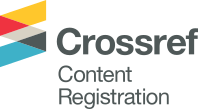Combined Sensitisation of Benzaldehyde Diphenylhydrazones: Effect of Hydrazone Structure on Sensitization Efficiency
DOI:
https://doi.org/10.18321/ectj602Abstract
Injection, spectral and combined (injection-spectral) sensitisations of several benzaldehyde diphenylhydrazones have been studied using the layers of amorphous selenium and complex compounds based on pyril dyes to broaden photosensitivity spectrum of electrophotographic carrier and to study sensitisation mechanism. Two photogeneration mechanisms for charge carriers have been shown to exist at a combined sensitisation, i.e. generation in the injection layer followed by the injection into a transport layer and generation in a transport layer on a dye. The excited dye molecules have been established to create hole strapping sites in a transport layer: it is exhibited in a different nature of photodischarge curves in selenium- and dye-absorbing regions at the negative surface potential. The effect of the substituent in a benzaldehyde fragment on the efficiency of injection, spectral and combined sensitisations of benzaldehyde diphenylhydrazones has been studied. The ionization potentials of hydrazones were determined by the two following methods: according to the charge transfer band of hydrazone-chloranil charge transfer complexes and by means of quantum-chemical calculations of hydrazone molecules to interpret the results obtained. In the course of quantum-chemical calculations the conjugation character was also determined in the molecules of benzaldehyde diphenylhydrazones.
References
(2). Mikubaeva, E.V., Kobotaeva, N.S., Ryannel', E.F., Sirotkina, E.E., Sib. Khim. Zh. 2: 97 (1992).
(3). Mikubaeva, E.V., Kobotaeva, N.S., Ryannel', E.F., Sirotkina, E.E., and Koval', E.O., Sib. Khim. Zh. 3: 60 (1992).
(4). Yokoyama, M., Electrophotography 3: 282 (1986).
(5). Murayama, T., J. Jap. Soc. Colour Mater. 5: 284 (1988).
(6). Foster, R., Chem. Brit. 12: 18 (1976).
(7). Takahashi, R., Kusabayashi, S., and Yokoyama, M., Electrophotography 3: 236 (1986).
(8). Becker, H., Berger, M., Donsche, G. Organikum: Organisch-chemisches Grundpraktikum. VEB Deutscher Verlag der Wissenschaften, Berlin, 1976. Translated under the title Organikum: Praktikum po organicheskoi khimii. Mir, Moscow, 1979, p. 60.
(9). Bruni, P., Cardellini, L., Conti, C., Giorgini, E., and Tosi, G., Gass. Chim. Ital. 3: 187 (1990).
(10). Voityuk, A.A., Zh. Strukt. Khim. 1: 138 (1988).
(11). Bliznyuk, A.A., and Voityuk, A.A., Zh. Strukt. Khim. 4: 190 (1986).
(12). Pacansky, J., Coufal, H.C., and Brown, D.W., J. Photochemistry 37: 293 (1987).
(13). Pacansky, J., McLean, A.D., and Miller, M.D., J. Phys. Chem. 1: 90 (1990).
(14). Gordon, A.J., and Ford, R.A. The Chemist's Companion: a Handbook of Practical Data, Techniques, and References. Wiley, New York, 1972. Translated under the title Sputnik khimika. Mir, Moscow, 1976.
(15). Kitaigorodskii, A.I., Zorkii, P.M., and Bel'skii, V.K. Stroenie organicheskogo veshchestva. Dannye strukturnykh issledovanii (The Structure of Organic Substance: Data of Structural Studies). Nauka, Moscow, 1980.
(16). Clark, T. A Handbook of Computational Chemistry: a Practical Guide to Chemical Structure and Energy Calculations. Wiley, New York, 1985. Translated under the title Komp'yuternaya khimiya. Mir, Moscow, 1990.
Downloads
Published
How to Cite
Issue
Section
License
You are free to: Share — copy and redistribute the material in any medium or format. Adapt — remix, transform, and build upon the material for any purpose, even commercially.
Eurasian Chemico-Technological Journal applies a Creative Commons Attribution 4.0 International License to articles and other works we publish.
Subject to the acceptance of the Article for publication in the Eurasian Chemico-Technological Journal, the Author(s) agrees to grant Eurasian Chemico-Technological Journal permission to publish the unpublished and original Article and all associated supplemental material under the Creative Commons Attribution 4.0 International license (CC BY 4.0).
Further distribution of this work must maintain attribution to the author(s) and the published article’s title, journal citation, and DOI.









